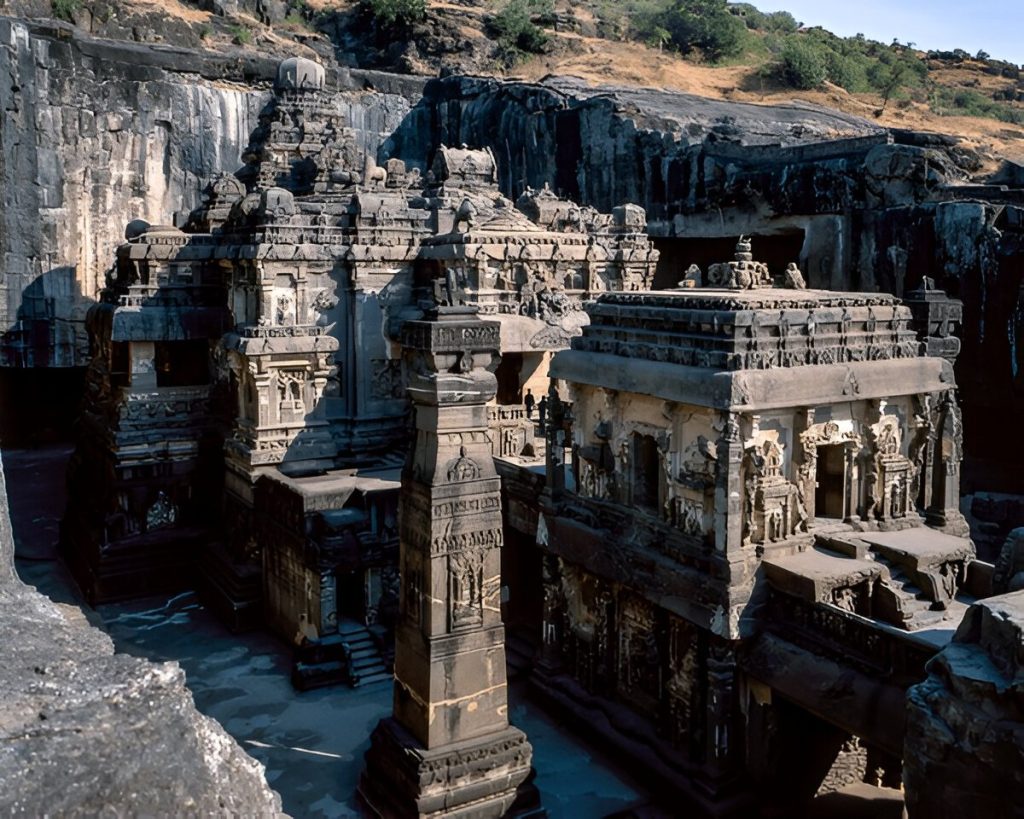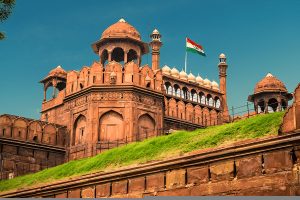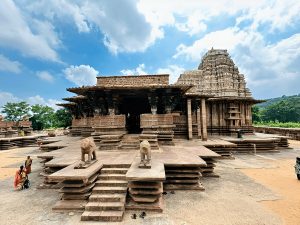As an avid adventurer, I have visited numerous wonders across the world.However, nothing prepared me for the overwhelming magnitude of the Kailasa Temple in Ellora, India.I had the opportunity to witness this old marvel firsthand, and it left me in complete awe. The journey to the Kailasa Temple was an adventure in itself.
I traveled to Aurangabad, Maharashtra, the next large city, which is well-connected by air and train. From there, I took a scenic 30-kilometer drive to Ellora Caves, where the temple is located. As I approached the site, the rugged terrain and the sight of ancient rock-cut caves heightened my anticipation. Once inside, I was immediately captivated by the sheer scale of the temple, but if there’s one thing no traveler should miss, it’s the view from the top. Climbing up to the surrounding cliffs offers a splendid aerial perspective of the entire monolithic structure, revealing the full grandeur of the temple’s intricate carvings and its seamless integration into the mountain.
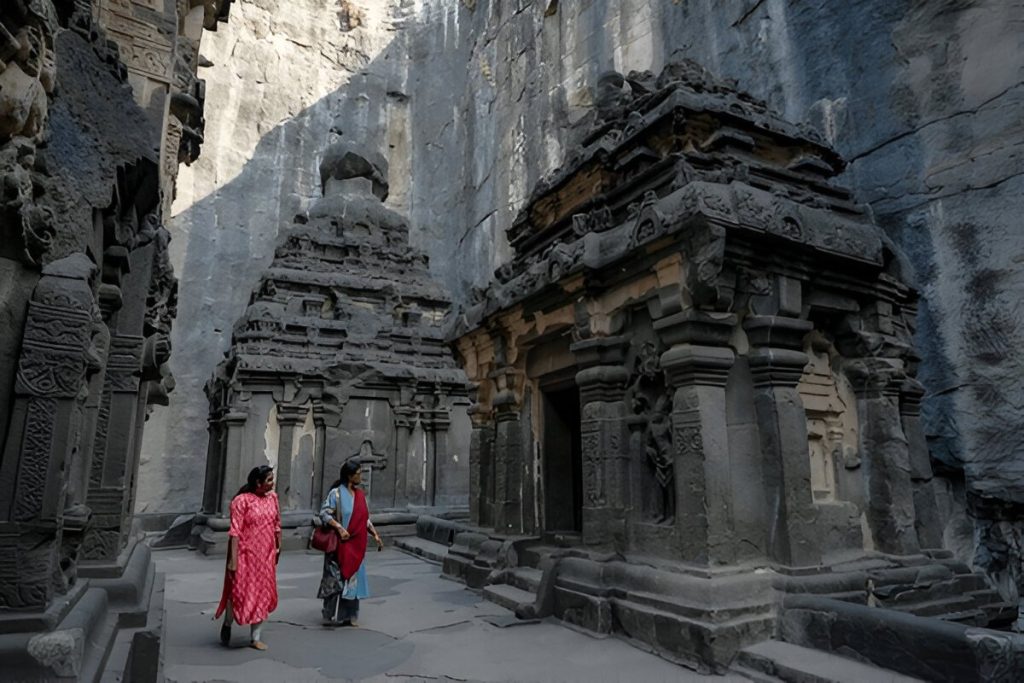
Arrival at Ellora: The First Glimpse
The journey to Ellora was smooth, and as I stepped out of the vehicle, I could feel a shift in the atmosphere. There was an inexplicable energy in the air—a blend of history, devotion, and human ingenuity. I had my first breathtaking view of Kailasa Temple, an architectural wonder dedicated to Lord Shiva. Unlike any structure I had ever seen, this temple wasn’t built in the conventional sense—it was carved downward from a single basalt rock. The sheer thought of artisans sculpting this masterpiece over centuries without modern tools was astonishing.
Stepping Into Another Era
As I descended into the temple complex, I was struck by its massive scale. The towering pillars, intricately sculpted walls, and finely detailed carvings depicted Hindu mythology in a way that felt alive. I ran my hands over the cool stone, tracing the outlines of battle scenes, deities, and celestial beings.
The guide explained that the temple was commissioned by King Krishna I of the Rashtrakuta dynasty in the 8th century. What amazed me most was that it wasn’t just a temple—it was an entire three-dimensional ecosystem of devotion, with interconnected shrines, corridors, and halls.
The Most Important Attraction: The Central Shiva Lingam
Among all the incredible features of the temple, the sanctum with the towering Shiva Lingam was the most significant. As I walked toward it, a wave of serenity washed over me. The sanctum, dark yet illuminated by a single oil lamp, exuded an otherworldly aura.
Standing before the Shiva Lingam, I understood why Kailasa was considered one of the greatest spiritual and architectural wonders of the world. The chamber’s acoustics amplified the chants and hymns, making the sound vibrate through my very core. At that moment, I felt as if time had stopped—transporting me to an era of devotion and artistry beyond comprehension.
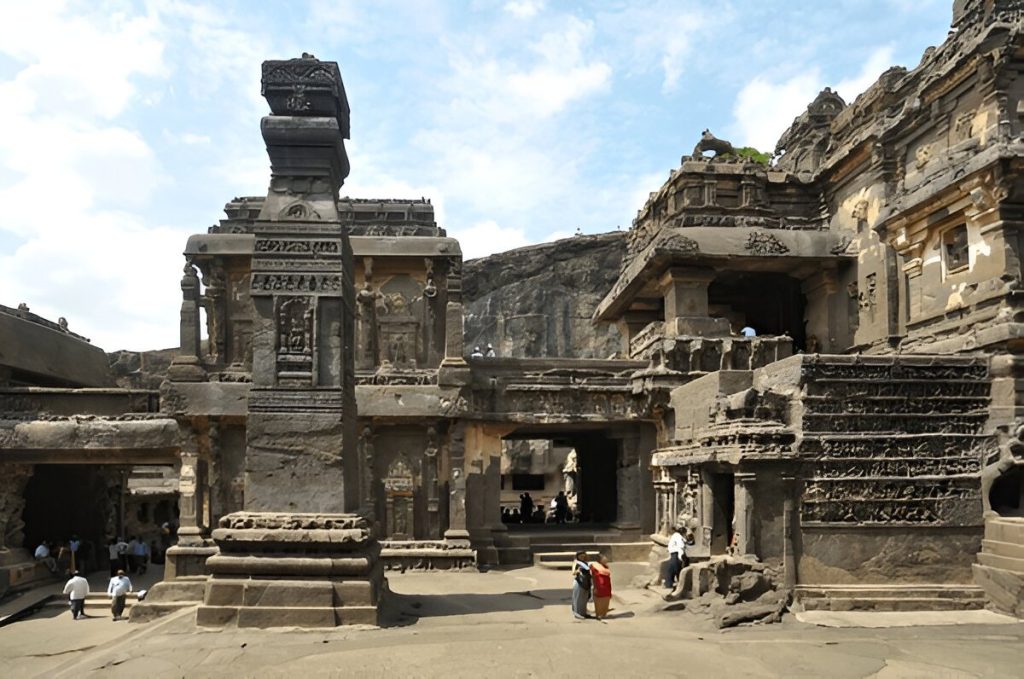
Leaving with a New Perspective
As I stepped out of the temple and took one last look, I felt a deep sense of reverence for the unknown artisans who had created this marvel. The Kailasa Temple was not just an architectural wonder; it was a testament to human perseverance, devotion, and imagination. No matter how many places I travel to, this memory will always remain among the most extraordinary.

